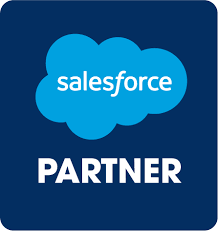Introduction
In the ever-evolving world of digital marketing, businesses are realizing the importance of engaging customers throughout their entire journey – from the first interaction to becoming loyal advocates. Customer lifecycle marketing automation has emerged as a powerful tool that streamlines and personalizes these interactions. In this article, we will explore the concept of marketing automation across the entire customer lifecycle and the strategies and tools that can make it happen.
Understanding the Customer Lifecycle
The customer lifecycle encompasses every stage of a customer’s relationship with a business, from the moment they become aware of the brand to their first purchase, and all the way to becoming loyal and advocating for the brand.
Awareness: At this stage, potential customers become aware of your brand through various channels, such as social media, search engines, or word-of-mouth referrals.
Acquisition: Once aware, customers are acquired through lead generation efforts, including email sign-ups, content downloads, and other interactions.
Conversion: This is where leads convert into paying customers, making their first purchase.
Retention: The post-purchase phase involves keeping customers engaged and satisfied, encouraging repeat purchases, and building brand loyalty.
Advocacy: Loyal customers turn into brand advocates, promoting your products or services to others and contributing to your brand’s growth.
How Marketing Automation Fits In
Marketing automation plays a crucial role in each phase of the customer lifecycle:
Awareness: Use automation to track and analyze customer behavior and preferences, allowing you to tailor your content and marketing efforts to reach the right audience.
Acquisition: Implement lead generation campaigns that capture customer data and preferences. Automation helps in segmenting and nurturing these leads efficiently.
Conversion: Utilize automation to send personalized content and product recommendations to guide potential customers towards their first purchase.
Retention: Automated email sequences and targeted content keep customers engaged post-purchase, increasing the likelihood of repeat business.
Advocacy: Automation helps identify and nurture loyal customers, turning them into brand advocates through personalized incentives and referral programs.
Strategies for Effective Customer Lifecycle Marketing Automation
Segmentation: Divide your audience into distinct segments based on demographics, behavior, and preferences. This enables you to create highly targeted and relevant marketing campaigns.
Lead Scoring: Assign scores to leads based on their interactions and engagement level. Focus your resources on those with higher scores to maximize conversion.
Personalization: Craft personalized content and messages that resonate with individual customers, improving engagement and satisfaction.
Multichannel Engagement: Reach customers across multiple digital touchpoints, ensuring a seamless and consistent experience.
Analytics and Optimization: Regularly analyze the performance of your marketing automation efforts. Use data-driven insights to make necessary adjustments and improvements.
Conclusion
Marketing automation for the whole customer lifecycle is a game-changing strategy that can help businesses engage customers at every stage, from awareness to advocacy. By implementing the right automation tools and strategies, you can create highly personalized, efficient, and effective marketing campaigns that lead to increased customer retention, loyalty, and advocacy. In the competitive digital landscape, embracing customer lifecycle marketing automation is not just a choice; it’s a strategic imperative for businesses striving to thrive and connect with their audience in a meaningful way.




